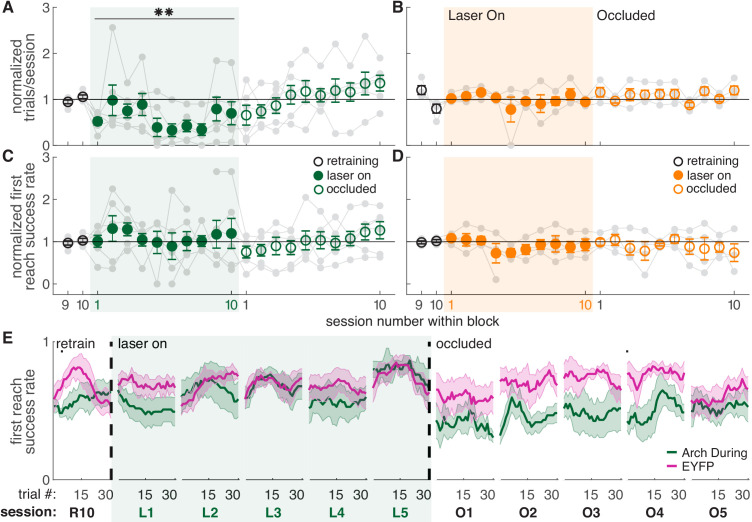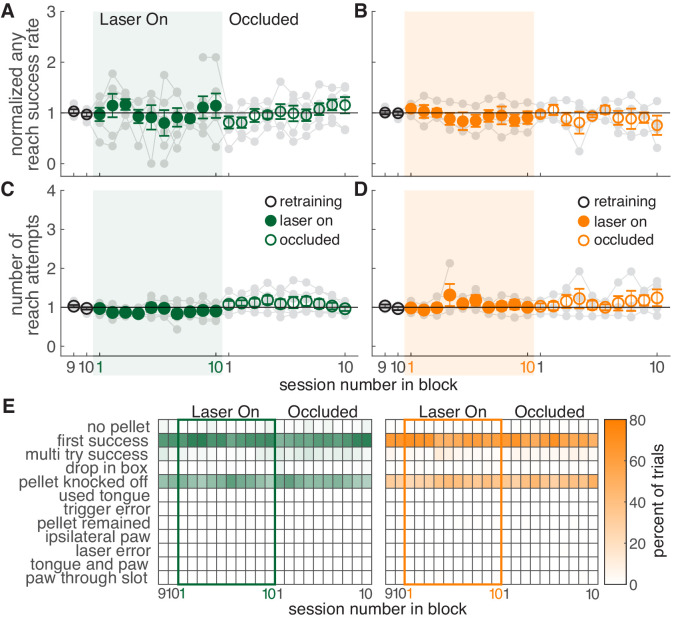Figure 4. Dopamine neuron inhibition during reaches decreases the number of reaches performed but does not impair reach accuracy.
(A) Average number of trials per session divided by the baseline number of trials for ‘during reach’ inhibition. Gray lines represent individual rats. Linear mixed model: effect of laser: t(80) = −0.21, p=0.84; interaction between laser and session: t(584) = −2.64, p=8.47×10-3. (B) Same as (A) for ‘between reach’ inhibition. Linear mixed model: effect of laser: t(80) = 0.93, p=0.36; interaction between laser and session: t(584) = −1.52, p=0.13. (C) Average first attempt success rate divided by baseline success rate for ‘during reach’ inhibition. Linear mixed model: effect of laser: t(133) = 0.59, p=0.56; interaction between laser and session: t(584) = −0.40, p=0.69. (D) Same as (C) for ‘between reach’ inhibition. Linear mixed model: effect of laser: t(133) = −0.64, p=0.52; interaction between laser and session: t(584) = 0.10, p=0.92. (E) Moving average of success rate across trials within individual sessions in the last retraining session, first 5 ‘laser on’ sessions, and first 5 ‘occlusion’ sessions. Unlike panels C and D, these are not normalized to retraining sessions because they are within-session moving averages. Black bars represent statistically significant differences between groups (Wilcoxon rank sum test, p<0.01). ‘R10’, ‘L1’, ‘O1’, etc. indicate the 10th retraining session, first ‘laser on’ session, first ‘occlusion’ session, etc. Figure 4—figure supplement 3 shows additional performance measures for ‘during reach’ and ‘between reach’ Arch activation (‘any reach’ success rates, number of attempts per trial, and breakdown of reach outcomes across sessions). Shaded colored areas in (E) and error bars in A-D represent s.e.m. Moving average of success rate within sessions for Arch Between rats is shown in Figure 4—figure supplement 1. Data for individual Arch During and Arch Between rats are shown in Figure 4—figure supplement 2. ** indicates p<0.01 for the laser-session interaction term in panel A.




